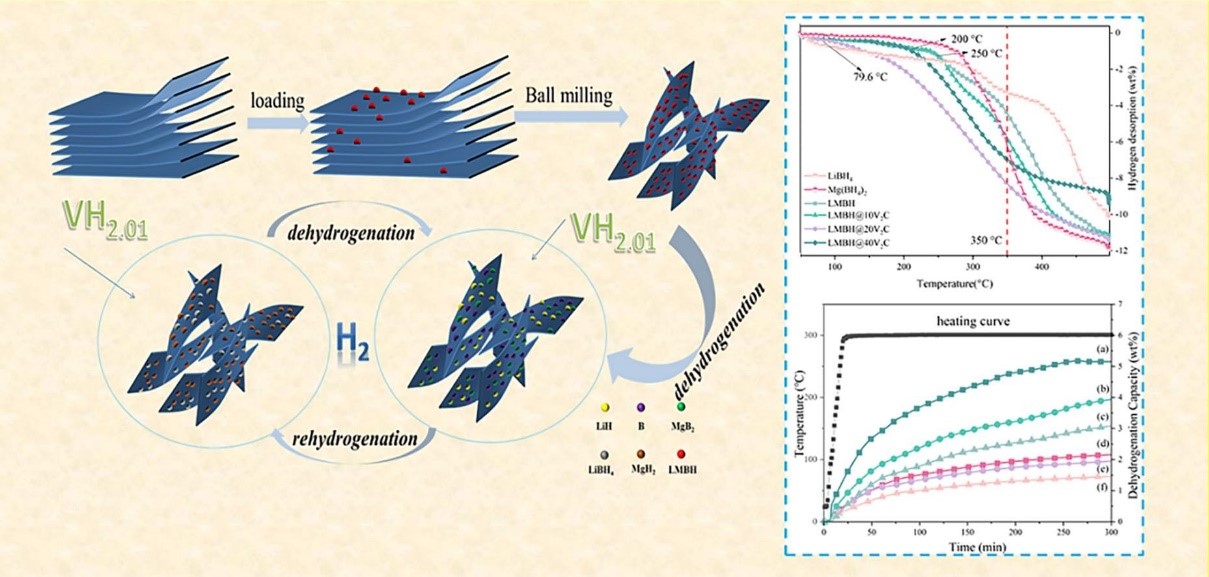论文简介如下:
固态硼氢化物是一种很有前途的固态储氢材料,但其吸氢的可逆性和动力学还有待改进。在本研究中,首次采用重复球磨和熔融的新策略制备了以V2C Mxene为基体有效负载的LiBH4-Mg(BH4)2纳米复合材料(LMBH)。LMBH- 20V2C复合材料在350℃下释放8.1 wt%的氢,而未掺杂的LMBH在相同条件下仅释放4.3 wt%。LMBH-V2C复合材料的两步脱氢活化能较低(118.2和125.2 kJ/mol)。在LMBH- V2C样品中发现了超过5 wt%的可逆氢容量,比未掺杂的LMBH高出138%。纳米级LMBH-V2C复合材料保持未团聚状态,在循环过程中形成VH2.01物质作为活性“氢泵”。LMBH-V2C复合材料具有优异的储氢性能,这是纳米化和V2C Mxene催化作用的结合。
Solid-state borohydride was one of the promising solid-state hydrogen storage materials, but the reversibility and kinetics of hydrogen de/absorption in borohydrides still need improvement. In this study, a new strategy of repeated ball milling and melting was first used to produce LiBH4-Mg(BH4)2 nanocomposites (LMBH) effectively loaded on V2C Mxene as the matrix. The LMBH-20V2C composite released 8.1 wt% of hydrogen at 350 ℃ while un-doped LMBH only released 4.3 wt% under the same conditions. Two-step dehydrogenation with lower activation energies (118.2 and 125.2 kJ/mol) were found in LMBH-V2C composites. More than 5 wt% reversible hydrogen capacity was discovered in LMBH-V2C samples, which was 138 % more than that of un-doped LMBH. The nano-sized LMBH-V2C composite retained unaggregated, and VH2.01 species was formed during cycling as an active “hydrogen pump”. The outstanding hydrogen storage performance of LMBH-V2C composites could be attributed to the combination of nano-sizing and catalysis from V2C Mxene.


